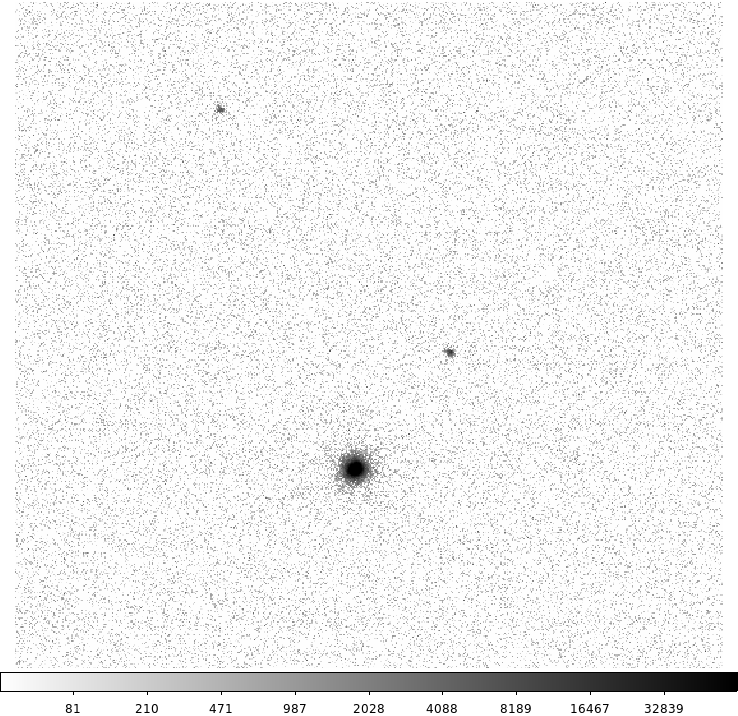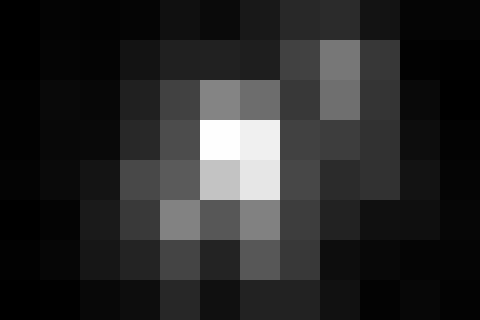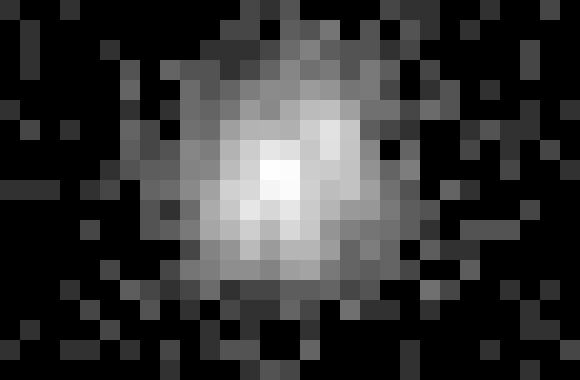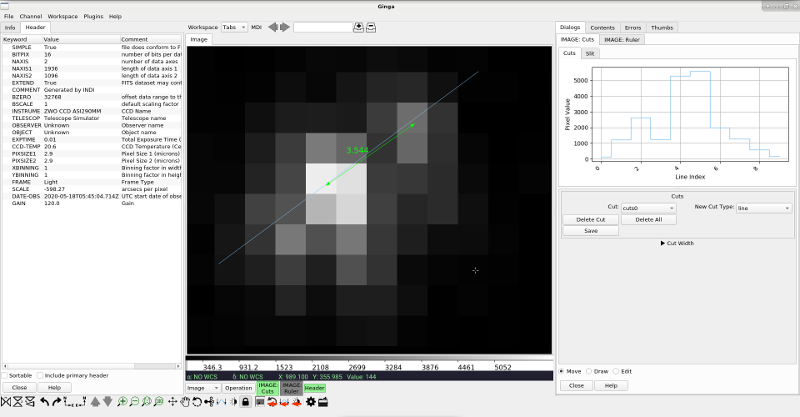Two Infinities
Sun, 14 Jun 2020
A Moderately Close Double Star and Seeing Measurements
This is a look at double star STF 1757 (F. Wilhelm von Struve) located just a shade north of zeta Virgo, a 7.8/8.8 magnitude solar type binary with K giant according to MacEvoy and Tirion's "Double Star Atlas". I was unable to verify by plate solving at Astrometry.net, but the two nearby stars in the image match up with the C and D stars, magnitudes 11.9 and 12.5, listed in the Washington Double Star Catalog (WDS). This image was captured near midnight May 17th with a ZWO ASI290MM on an 8" f/6 reflector.

C and D are not physically related to the AB pair although an orbit has been computed for the AB pair, a 461 year revolution at a separation of 73 astronomical units. The WDS also lists the apparent separation as 1.7 arcseconds as of 2018.
Here are two close-ups in SAO DS9 of STF 1757 A and B stars. The first maps file brightness values linearly onto display values while the second uses a convex transformation increasing the visibility of intermediate values.


The pixel squares are .49 arcseconds on edge.
Here is a screenshot from a Ginga (Japanese for "galaxy") analysis of the same exposure. The cut through the two bright areas shows a clear diminution of intensity, hence we may say the image successfully split the double star components. The ruler between the approximate centers of the bright areas reads a distance of 3.54 pixels, or about 1.7 arcseconds in agreement with WDS.

Ideally this would mean that seeing, as measured by "full width half maximum" was no more than 1.7" that evening, and that might actually have been the case during the .01 second exposure. But not all the images were this clear, due either to worse seeing or to telescope shake in the strong breeze.
Working at the scope, I was unable to see that my images were achieving sufficient detail to split the star and on subsequent evenings that week, tested only stars with greater than 2 arcseconds separation.
posted at: 00:57 | path: | permanent link to this entry
